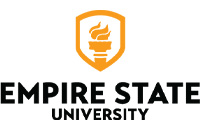My EBSCOhost and Folders
My EBSCOhost

You will need to have an EBSCOhost account and be signed into it in order to save items to your folder. This is separate from the college login and password that you used to get into the database.
If you do not have an EBSCOhost account, you can put items in your folder, but they will disappear as soon as your session expires or you log out or close the window.
- Click Sign in in the blue menu at the top right of the EBSCOhost screen.
- Click Create an Account.
- Fill in the contact information that it asks for and click Save Changes.
- From now on, click Sign in (in the blue menu at the top right of the EBSCOhost screen) and enter your EBSCOhost username and password as soon as you log in to the database.
- When you are logged into My EBSCOhost, there will be a yellow banner across the round EBSCOhost logo next to the search box!
Using Folders
Adding Items To Your Folder


- To add an article or other item to your folder, click the Add to folder link (with the little yellow folder icon) underneath it.
- It will change to say Remove from folder.
- A yellow Folder has items box will appear on the right side of your search results. Click Go to Folder view if you want to see the items in your folder.
Working With Items In Your Folder

Your EBSCOhost folder is used to store items that you think you will want to use over many login sessions. You can also go into your Folder and:
- Select all the items in your folder, or
- Select just certain items in your folder, and then
- You can email, download, print or export (for use in a spreadsheet [CSV format] or citation management tool like Zotero [RIS] the citation and abstract information. This process DOES NOT include full-text - for that you need to display and print each article one at a time.

